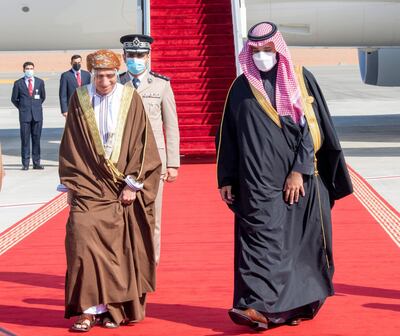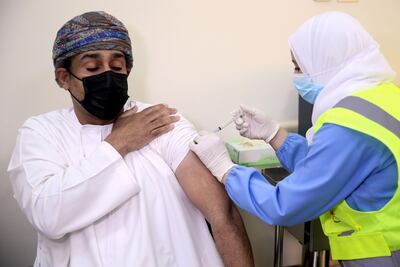The demise of Sultan Qaboos bin Said on January 10, 2020 marked the end of an era. Since the beginning of the “Blessed Renaissance” in 1970, which took place under his stewardship, Oman achieved unprecedented development, growing massively in every socio-economic metric.
For instance, total GDP increased from $256 million in 1970 to almost $77 billion in 2019. In the same timeframe, the sultanate went from having just 10 kilometres of paved roads, to 40,000km. The number of schools grew rapidly, from three to over 2,000.
But Oman’s march towards modernity has not only focused on modern metrics of development. A key part of Sultan Qaboos’s vision was the importance he placed on the preservation of the country’s centuries-old spectacular heritage and culture as well.
Oman’s current leader, Sultan Haitham bin Tarik, summed up the nation’s gratitude to Sultan Qaboos in a poignant eulogy delivered the day after his passing, in which he said “no words can express what he had achieved and accomplished”.
He references how the late ruler had set up a nation from scratch, one which is now recognised as a cultural and diplomatic power the world over. He went on to say that Sultan Qaboos’s reforms have led to “the blossoming he had wished for his country”. In this vein, Sultan Haitham pledged to continue the work started by his predecessor.
Oman was still coming to terms with the tragic loss of its legendary former sultan when the World Health Organisation declared Covid-19 a global pandemic on March 11, of that same year. The pandemic and its fallout led to an unprecedented series of challenges for countries across the globe. While the far-reaching ramifications of the crisis have humbled even the most developed nations, Oman moved with decisiveness, exhibiting remarkable resilience and nimble-footedness in its response.
A Supreme Committee on Covid-19 was formed in early March. Headed by Hamoud bin Faisal al Busaidi, the Minister of Interior, the Supreme Committee took a series of measures to safeguard the health of citizens, as well as orchestrating the subsequent re-opening of the economy after the lockdown of July and August.
The successful results are a testimony to the success of these measures. As of January 4, 2021, Oman recorded almost 130,000 cases of Covid-19 and 1,500 deaths. This translates to a recovery rate of almost 95 per cent, with mortalities at just over one per cent.
The government also took a number of measures to stimulate the economy and help businesses. On March 18, the Central Bank of Oman announced a comprehensive incentive package, injecting more than $20bn into the economy.
The central bank also announced a slew of other relief measures, like a five per cent increase in the lending ratio for commercial banks and a six-month deferment of interest on loans for affected borrowers, particularly small and medium-sized enterprises.
Relief initiatives with regards to statutory and regulatory compliance were also unveiled. The corporate sector was given tax relief in the form of a three-month extension for filing deadlines, and tourism and municipal taxes were waived until the end of August.
While confronting the immediate fallout of the pandemic, the government simultaneously put in place a restructured governance apparatus. A new Cabinet was formed in August, with the numbers of ministers being reduced from 26 to 19. A number of government institutions were either dissolved or merged with other ministries.
The new Cabinet reflects a process of continuity and change, bringing in a new generation of ministers with relevant fields of expertise, while retaining a cross-section of ministers from before.
In a major devolution of power, Sultan Haitham gave up the titles of Defence Minister, Foreign Minister, Finance Minister and the Chairman of the Central Bank of Oman to other officials. This marks a significant shift towards a more de-centralised style of governance. Similarly, the 11 governorates of Oman have been assigned more powers, strengthening the federal process.
The restructuring of the state apparatus will help achieve multiple objectives, such as increasing the efficiency of the government, promoting investment and business, achieving more focused development at the level of individual governorates. Overall, these changes will stand the country in good stead as it confronts immediate economic challenges and as it draws up a roadmap for the future.
A series of regulations were introduced to achieve a number of economic objectives. For example, the Medium-Term Fiscal Balance Plan 2020-2024 (MTFP), which was introduced in October 2020, focusses on supporting economic growth, diversifying and enhancing government revenue streams, assessing state expenditure and their efficiency, enhancing the social safety net and strengthening financial management. The MTFP aims to bring the budget deficit down to just below two per cent of GDP by 2024. Oman’s 2021 budget has forecasted a deficit of eight per cent.
In an effort to shore up government revenues, Oman announced the introduction of a five per cent value-added tax from April 2021. Water and electricity subsidies will be phased out, starting from January 2021 until 2025 and an income tax on high earners is also under consideration. While these steps will lead to a period of belt tightening, fiscal prudence will help the government enhance its development expenditure in the years to come.
In one of the landmark decisions of the year Sultan Haitham approved the launch of Vision “Oman 2040” in December 2020. It lays down the roadmap for the country over the next two decades. It aims to build upon the gains made since the beginning of the Blessed Renaissance and to further drive a developed, diversified and sustainable Omani economy.
The 10th Five-Year Plan (2021-2025) – the first plan of the Vision 2040 – aims to achieve an average GDP growth of three and a half per cent, creating 135,000 jobs over the duration of the plan’s timeframe. Oman sits on a rich pool of young talent, with 65 per cent of the Sultanate’s population being under the age of 35. Vision 2040 aims to unlock this demographic dividend by modernising the education system, as well as supporting scientific research and innovation.
These measures, along with affirmative action in the form of Omanisation, encouraging more Omanis into jobs previously held by expatriate workers, will create employment opportunities for young citizens, giving businesses access to a dynamic and skilled workforce. The tourism sector, which has long been a major employment generator, is getting a major boost with the exemption of an entry visa for nationals of 103 countries for a 10-day period.
Looking back on the year since the passing of Sultan Qaboos, I can confidently state that Sultan Haitham has ensured a process of continuity and change. Under his visionary leadership, Oman has confronted the immediate challenges with resolve and laid a robust foundation for a glorious future.
Mohammed Mahfoudh Alardhi is the Executive Chairman of Investcorp and Chairman of Sohar International







